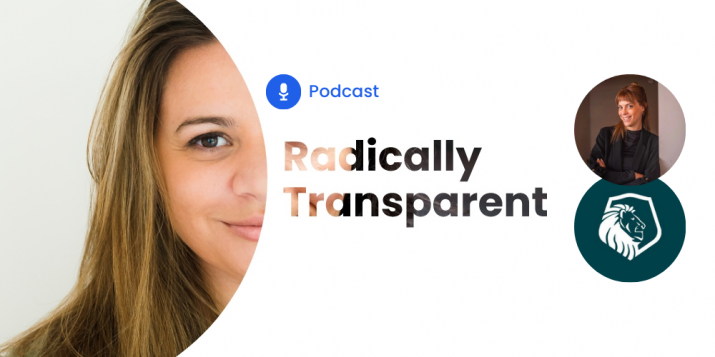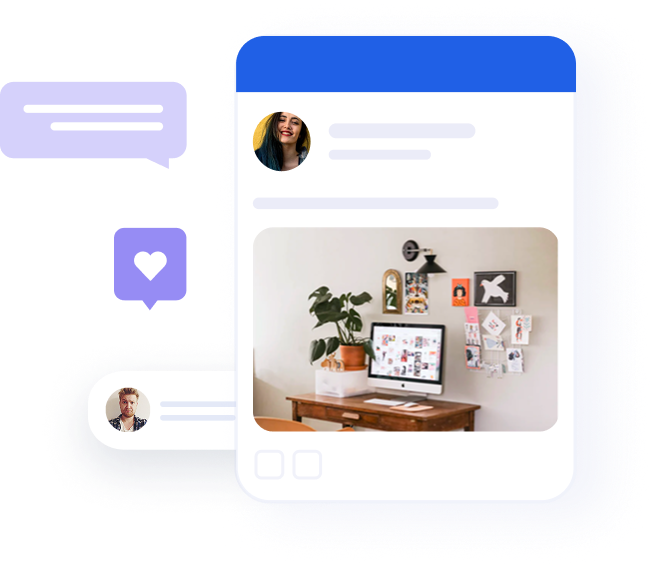
What is employer branding—and how to manage it for B2B companies?
Table of contents
Recruiting practices have changed dramatically over the last ten years, and companies that stick to outdated tactics are quickly falling behind the competition. If you want to attract the top talent, you need to give them reasons to consider your work environment over their alternatives and nail your employer branding.
Given the benefits of employer branding, it’s no surprise that a strong employer brand is associated with as much as 50% in savings on hiring costs. On the other hand, a weak brand could lead to 10% more spending on each new hire.
Having a great employer brand can make or break recruiting that next great candidate. In this piece, we’ll cover some basics, and highlight ways to solidify your employer brand.
Table of contents
- What is Employer Branding?
- Why Employer Branding Matters
- What is an Employer Branding Strategy
- How to Implement an Employer Branding Strategy in 6 Steps
- 5 Employer Branding Examples for Inspiration
What Is employer branding?
Employer branding is the marketing of the experience your employees and potential candidates have through your recruiting, employment, and ending of professional relationships with employees.
It boils down to your reputation as an employer and if your employees, past, present, and future, enjoyed their experiences while working with you.
Just as regular branding involves developing a strong image for your target audience, employer branding is all about building your reputation and image for potential employees. Your employer brand is what candidates think when they see a job posting from your business.
By the time you interview a specific candidate for a particular job posting, it may be too late to have much of an influence on their opinion of your brand. Managing your employer brand requires careful attention to your general image so that candidates come in with the right expectations.
Why employer branding matters
Companies with strong reputations will find it much easier to interest highly qualified candidates, while those with weak reputations will have trouble convincing anyone to work for them. This typically means that businesses with positive employer brands will have an easier time with recruiting, and they will also be able to hire the same candidates for less money.
Even though developing an employer brand takes time and money, that investment will more than pay off over time. A full three-quarters of active jobseekers are more likely to apply to a company that manages its employer brand, which means more candidates for each listing and less time spent filling vacant positions.

Once you’ve built up a strong brand, you’ll have lower recruiting costs, and you’ll be able to connect with more productive employees relative to your competitors.
Recommended for further reading
What Is an employer branding strategy?
Your employer branding strategy is everything you do to let potential hires know about what you do to make your company a great place to work.
A strong employer brand requires at least two elements:
- You need to have a positive work culture that your current employees truly appreciate.
- You need to communicate those values to candidates and jobseekers so that they associate them with your business
Positive work culture
Naturally, your visible employee brand starts with actions that take place within the organization itself. If you aren’t effectively catering to your current employees, candidates will have no reason to believe that things will be any different for them if they join your team. This will also lead to increased turnover, making it even more difficult to establish a cohesive company culture.
Communicating employer values
Make sure to gather feedback from employees to learn more about your strengths and weaknesses as an employer. This will also show your team that you’re invested in their experience and want to know what you can do to improve your workplace. We’ll touch more on this.
How to implement an employer branding strategy in 6 steps
Now that you understand what employer branding is, you need to implement those concepts in your own organization. Here are a few of our top employer branding tips for companies that want to improve their image among prospective hires.
1. Find ways to differentiate yourself
Any successful employer branding strategy depends on factors that make the employer stand out from their competitors. The first thing you need to do is think about what elements of your organization make you an attractive place to work for potential hires.
Of course, this also forces you to think about what matters to the people you want working for you. Chances are, a ping-pong table and some snacks in the office aren’t going to cut it. Some candidates may be drawn in by the possibility of remote work, while others may prioritize other benefits such as health insurance or paid time off. Just as candidates need to sell you on their talents, you also need to sell yourself to candidates as a great work environment.
2. Audit your current employer brand
Before you can start making changes for the future, you need to develop a thorough understanding of your current brand. That begins with determining your eNPS (employee net promoter score). You should compare your performance against the benchmarks for your industry to get an idea of how you stack up to the competition.
An eNPS is designed to reflect how likely your employees are to recommend your company to their friends, family members, and by extension professional contacts. If your employees tell their friends not to work for you, that’s a clear sign that you aren’t doing enough to develop a strong employee brand.

Classically, an eNPS is a low-commitment form of feedback that asks your employees one simple question: “On a scale of 1-10, how likely are you to recommend working for our company to a friend or connection?” Depending on the answers, you have:
- Promoters: Those who respond 9-10. These are the employees who will actively encourage friends and family to work for your company.
- Passives: Those who respond 7-8. These are employees who aren’t necessarily unhappy, but they won’t go out of their way to promote your brand.
- Detractors: Those who respond 1-6. These are employees who are unhappy, and will actively discourage people from working with your company.
To judge the overall eNPS of your employees, you simply need to find the percentage of promoters, and subtract the number of detractors. From there, it’s easy to get a sense for how your employees feel and how to move forward in making them happier.
Fortunately, direct feedback isn’t the only way to evaluate employee satisfaction. Public review sites like Glassdoor are another great resource for companies that are having trouble identifying their strengths and weaknesses as employers. Take a close look at both positive and negative reviews to understand what employees typically experience and what you can do to make things even better.
Finally, don’t forget to check social media for even more insights. Social media has a different tone than formal surveys and employee feedback on Glassdoor, so you may be able to find more candid feedback here. Remember that the purpose isn’t to criticize or contradict every criticism—instead, focus on understanding why the employee felt that way and the steps you could take to ensure that the problem doesn’t affect future team members.
3. Write an employer brand USP
A USP (unique selling proposition) is a concise statement that encapsulates the key elements of a sales pitch. In the context of employer branding, your USP should describe the theme that will be held consistent across your entire company culture. Think of it as a mission statement that clarifies what you want to do to improve the employee experience and communicate those experiences to potential jobseekers.
What makes it more attractive to work for your company over every other company offering similar positions? Why should great talent choose to work for you, specifically?
Keep in mind that an employer brand USP is only as valuable as you make it. If your USP is simply used as a catchphrase, it won’t have the desired effect on recruiting or talent acquisition.
The principles of your USP need to be applied throughout the organization, both internally and when engaging with candidates. Make sure to integrate the language from your USP into as much company content as possible, including blog posts, videos, and podcasts.
4. Develop an employee advocacy program
Employee advocacy programs are another crucial element to long-term employer branding. In short, an employee advocacy program is a company initiative to incentivize your team to promote the brand and improve your customer-facing image.
When workers feel that they are only related to their employers through exchange, they are less likely to feel motivated or invested in the company’s success. Employees are always at their best when they feel that their employer has their back. Showing a consistent interest in the well-being of your team is a crucial best practice for employee advocacy.
Effective employee advocacy will have a positive impact on the performance of your existing team and your ability to bring in the right candidates. However, you will only be able to attract those candidates if you find a way to broadcast that image outside your organization.

Making sharing social posts easy is a great way to get employees to share—like with Oktopost’s one-click sharing Employee Advocacy Board.
For example, you could create content that gives viewers a positive impression of your brand, then assign employees as brand ambassadors to post personalized versions of that content to their own audience. Of course, the specifics of employee advocacy programs vary widely from one brand to another, so it’s important to find a strategy that makes sense for your unique culture.
If you aren’t already developing engagement through an employee advocacy program, now is the time to get started. In fact, employee advocacy is more commonly cited by CMOs as a top performer than any other social media initiative. This is one of the best long-term investments you can make in your internal culture and public image.

5. Optimize the hiring workflow
Some companies are so focused on recruiting and branding that they forget to give the same amount of attention to the actual hiring process. Getting the right candidates interested is only half the battle—you also need to hire them before one of your competitors.
In such a competitive, fast-paced market, inefficiencies in your hiring workflow could turn off top talent. If it takes them two weeks to get through your interview process and two days to finish interviewing with another company, then you’ll be working from a disadvantage when filling every new position.
With that in mind, you should be taking steps to streamline interviews to the fullest possible extent. When you identify the perfect candidate, you don’t want to waste any time going through several rounds of interviews and letting them take a position somewhere else.
If you need to go through multiple rounds of interviews, make sure that each candidate has the chance to interact with as many team members as possible. Going through multiple interviews with the same person is an inefficient approach that will only make it harder for them to connect with the rest of the team after starting in their new role.
6. Prioritize diversity, equity, and inclusion
Diversity, equity, and inclusion have become key concerns for employers over the last few years. While many companies pay lip service to these concepts, fewer brands take them seriously and apply them throughout the organization.
When top talent is looking at your company, they want to see people like themselves, as well as people who are different. We all benefit from a rich and diverse workplace, filled with different perspectives. It’s not enough to just say that you are inclusive on your careers page, it has to reflect in your workforce as well.
Improving your approach to diverse hiring will make you a more attractive place to work, while also helping you connect with more talent. Diversity is the only way to engage with as many perspectives as possible and broaden the horizons of your brand.
5 Employer branding examples
1. Oktopost
Oktopost is a social media management platform that integrates employer branding into its digital presence. As shown in the image below, Oktopost makes an effort to highlight employee accomplishments and milestones in order to show that employees are valued as individuals.
View this post on Instagram
Remember that employer branding doesn’t always have to be groundbreaking or cutting-edge. Simply demonstrating that you value the members of your team will leave a positive impression on jobseekers who may be considering a position with your brand.
2. SAP
SAP is a major multinational B2B brand with more than 100,000 employees and offices located in a long list of countries including Germany, India, China, Brazil, Canada, France, and the United States. While the Oktopost example above highlighted an individual milestone, SAP shows its commitment to company culture through a group run.

When you think of employer branding, you should think about how candidates perceive the experience of working at your company. Showing your team engaged in a fun group activity outside of the office indicates that working for you is more than just a typical job.
3. Adobe
Adobe is another global digital brand that aims to attract the top candidates for each position. Like other tech-related brands, Adobe is highly proactive when it comes to developing a public employer brand.
One great example of Adobe’s approach to employer branding is its recent interview with employee Damon Guidry. Adobe highlighted his unique contribution to the company and also gave him a platform to speak about his own experience with Adobe’s organizational culture.
This article perfectly demonstrates the numerous benefits of employer branding. Adobe’s interview questions expertly balanced the need for Guidry to voice his own ideas while also including the brand’s role in helping him reach his personal goals. For example, they asked Guidry “What about Adobe made you want to join as an employee,” setting him up to promote some of the best aspects of working at Adobe:
“Some tech companies focus on offering perks, like free food, parties, and ping pong tables in the breakrooms. They talk about a ‘culture of fun,’ but it often doesn’t add up to anything meaningful. What I saw at Adobe, and what I’ve worked to strengthen and bring to the forefront, is a sense of purpose around why we gather.”
One of the most important lessons of employee advocacy is that your team will work better for you when you make an effort to work for them and invest in their achievements. Following Adobe’s example will help you build better internal connections and improve your image among your target candidate groups.
4. HubSpot
To create a strong employer brand, you need to cultivate positive values in your organization. HubSpot’s LinkedIn post highlights transparency as one of the “five key values” they look for in employees and explains why it’s so vital to the company culture.
However, HubSpot isn’t content to simply say they hold this value. Instead, they put it into practice by asking readers to leave questions in the comments for the HubSpot team to respond to.
5. Salesforce
Finally, Salesforce leveraged LinkedIn to show its commitment to organizational camaraderie as well as the safety of its team during the pandemic. With companies taking so many approaches to in-person and remote work in the light of COVID-19, these measures are critical concerns for many employees and jobseekers.
While remote and hybrid work are important perks for some candidates, organizations need to make sure that these arrangements don’t have a negative effect on the culture. Only seeing coworkers during Zoom meetings tends to make teams feel more fragmented and less cohesive.
According to the full article, in-person events were a common request among Salesforce employees in 2021. Salesforce responded by looking for ways to facilitate those experiences without putting employees at risk.
Key takeaways
Competitive hours, pay, and benefits are obviously critical for successful recruiting, but candidates demand more from prospective employers. It’s no longer enough to offer vacant promises about your employee experience—it has to be manifested by your own employees throughout their time with your company.
By focusing on what makes your current employees happy, nailing what makes working for your company attractive, and investing in a way to get your employees to share content, you can create an employer brand that attracts the best candidates for each open position.
Want to nail employer branding and attract top talent? Check out our on-demand webinar on What Employee Advocacy Brings to the Table for B2B Brands!




